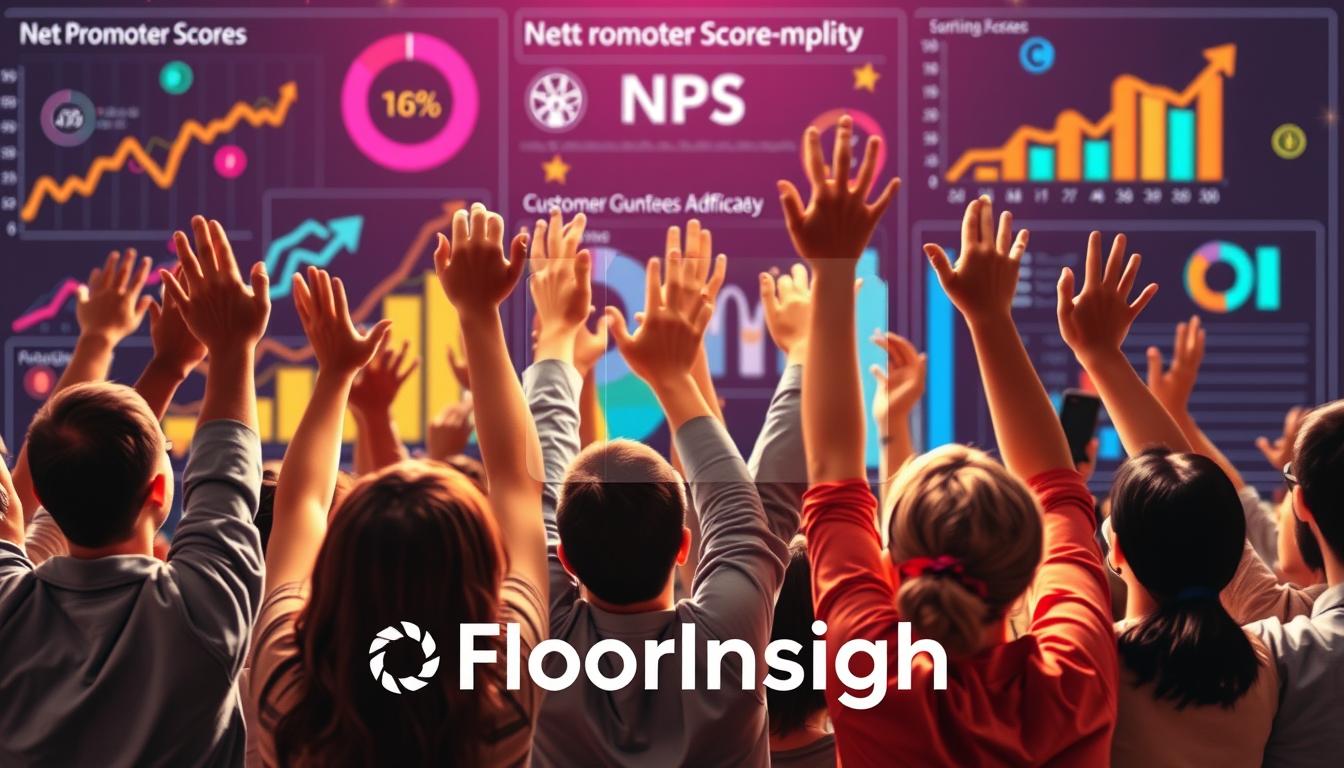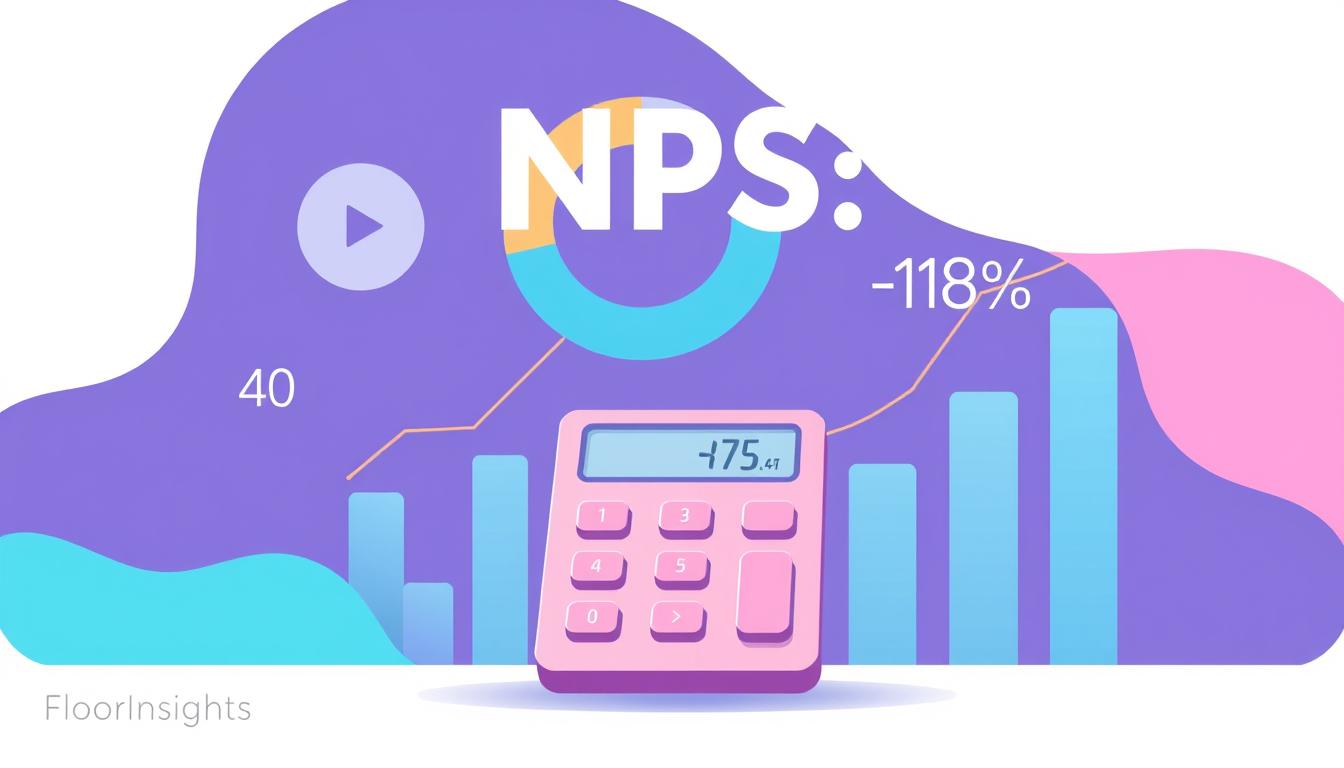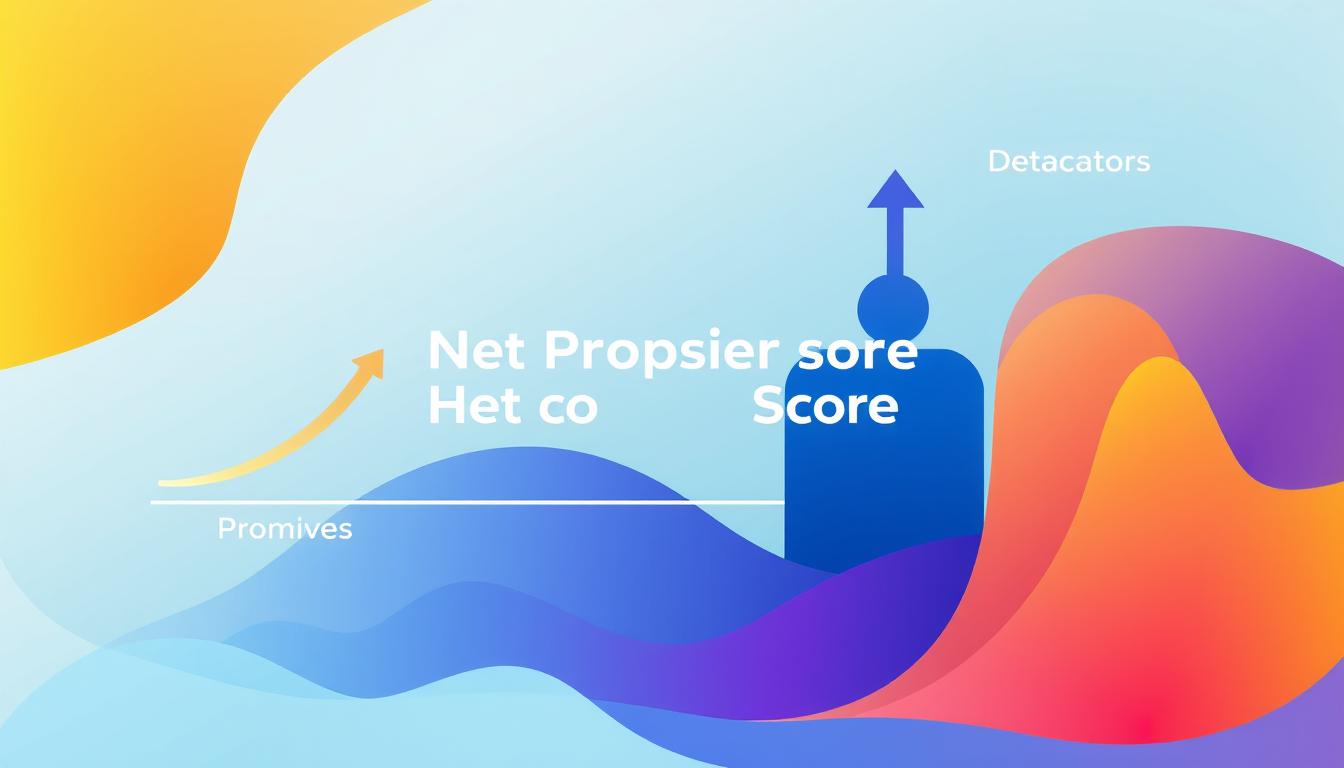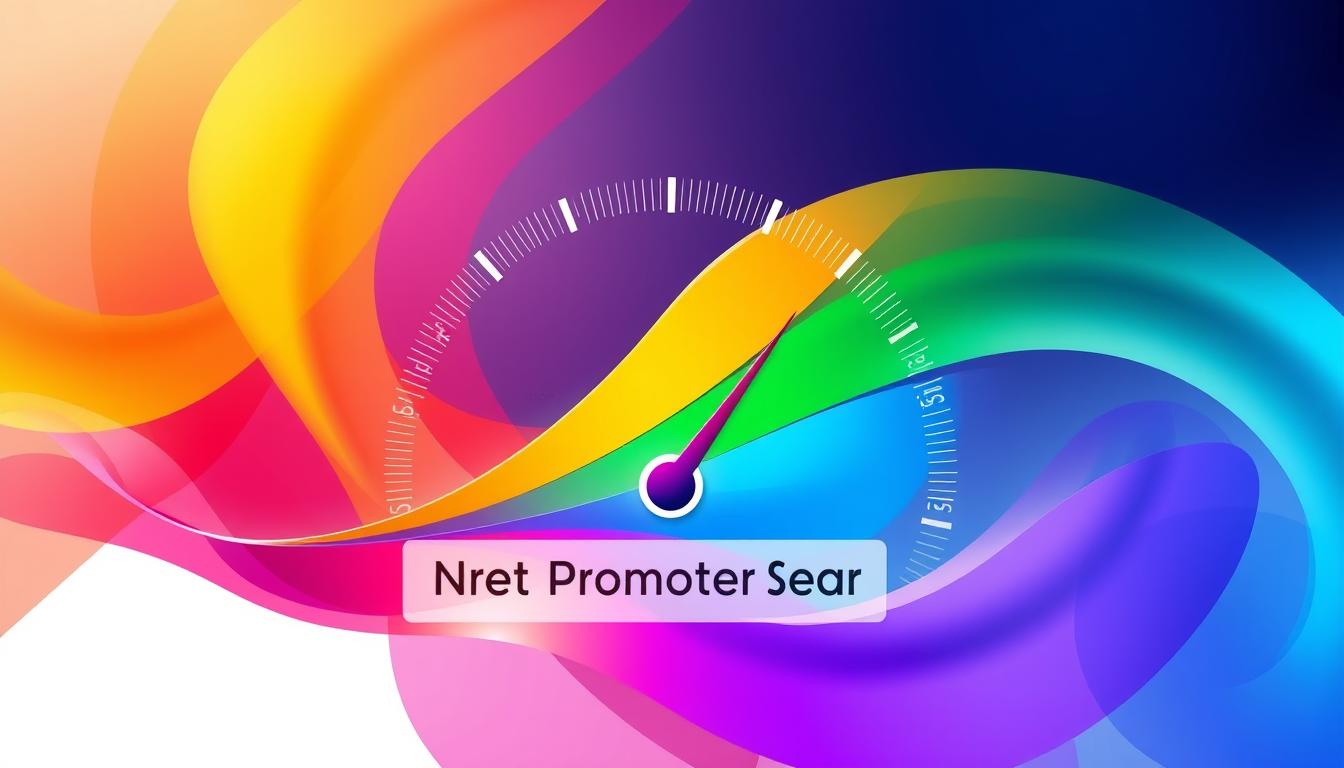In today’s competitive marketplace, understanding how to leverage the Net Promoter Score (NPS) for customer advocacy is crucial for building strong brand loyalty. We believe that by effectively utilizing NPS, we can transform our loyal customers into fervent brand advocates. This approach not only enhances customer loyalty but also fosters a deeper connection with our audience. Through this article, we will explore how NPS can identify promoters among our customers and discuss actionable strategies to engage them in a meaningful way. As we highlight the importance of customer advocacy, we aim to shed light on its long-term impact on business growth, particularly within the Indian context.
Key Takeaways
- The Net Promoter Score (NPS) is a vital tool for measuring customer loyalty.
- Effective identification of promoters can lead to invaluable brand advocates.
- Customer advocacy significantly enhances brand reputation and trust.
- Engaging with promoters can result in better customer retention.
- Long-term benefits of advocacy include increased sales and business growth.
Understanding the Net Promoter Score
The Net Promoter Score (NPS) is a critical metric that we use to gauge customer satisfaction and loyalty through a simple, yet effective, measurement system. By relying on a single question survey, we can gather valuable customer feedback to assess how likely clients are to recommend our products or services. The straightforward nature of the NPS survey enables businesses to efficiently understand customer sentiments and identify areas for improvement.
What is Net Promoter Score?
The Net Promoter Score is derived from a straightforward NPS survey question: “On a scale from 0 to 10, how likely are you to recommend our company to a friend or colleague?” Based on their responses, customers are categorized as Promoters (scores 9-10), Passives (scores 7-8), or Detractors (scores 0-6). This classification aids in the NPS measurement process, allowing organizations to analyze overall customer loyalty accurately. A higher percentage of Promoters in the results typically correlates with the potential for increased referrals and revenue.
The Origin of NPS
The origins of the Net Promoter Score trace back to the early 2000s, developed by Fred Reichheld in collaboration with Bain & Company. The creators aimed to establish a reliable gauge of customer loyalty that would transcend traditional metrics, which often fail to capture essential customer insights. NPS methodology reflects a commitment to understanding customer behavior and enhancing overall business performance based on the feedback received.
The Importance of Customer Advocacy
Fostering customer advocacy plays a vital role in the growth and success of any business. Advocates not only refer new customers but also provide invaluable feedback and enhance our brand’s credibility. Understanding why customer advocacy matters can significantly impact our business strategy.
Why Customer Advocacy Matters
Customer advocacy is essential because it creates a community around our brand. Engaging advocates leads to organic referrals, which can often result in higher conversion rates. These relationships strengthen brand loyalty and encourage loyal customers to share their positive experiences. Simply put, strong customer engagement fosters a sense of belonging and trust.
Benefits of Turning Promoters into Advocates
Investing in turning NPS promoters into advocates has numerous advocate benefits. These include:
- Increased Sales: Happy advocates refer friends and family, which naturally drives revenue growth.
- Reduced Marketing Costs: Word-of-mouth marketing is more cost-effective than traditional advertising methods.
- Enhanced Reputation: Customer testimonials build social proof, strengthening our brand’s image.
Incorporating customer advocacy into our business model not only ensures higher customer retention rates but also attracts new clientele, reinforcing the importance of nurturing these valuable relationships.
How NPS Works for Measuring Loyalty
The Net Promoter Score (NPS) offers valuable insights into customer loyalty through its structured survey methodology. Understanding the mechanics of the NPS survey allows us to gauge customer sentiment effectively. This process begins with a straightforward question that asks customers to rate their likelihood of recommending a product or service on a scale from 0 to 10. Participants are categorized as Promoters, Passives, or Detractors based on their responses, creating a framework for loyalty measurement.
The Mechanics of the NPS Survey
The NPS survey structure serves as a foundation for gathering meaningful data. The classic rating question is often accompanied by a follow-up open-ended question that invites respondents to elaborate on their scores, providing qualitative insights. We utilize an NPS survey platform to collect this data efficiently, ensuring that we reach a diverse audience to enhance reliability.
Interpreting NPS Results
Interpreting NPS scores involves calculating the difference between the percentage of Promoters and Detractors. The resulting score can range from -100 to +100, with higher scores indicating stronger customer loyalty. This critical data serves as a roadmap for understanding how to improve services, products, and customer experiences. Companies can analyze the qualitative feedback alongside the NPS scores to identify specific areas for enhancement.
| Category | Score Range | Customer Sentiment |
|---|---|---|
| Promoters | 9-10 | Highly satisfied and likely to recommend |
| Passives | 7-8 | Neutral, can easily switch |
| Detractors | 0-6 | Unsatisfied, may share negative feedback |
Ultimately, understanding the NPS process equips us to foster greater loyalty and enhance customer advocacy. Through effective interpreting of NPS scores, businesses can take actionable steps toward cultivating a more devoted customer base.
Identifying Promoters Through NPS Surveys
Effective customer insights rely on our ability to accurately classify supporters within our user base. By employing NPS surveys, we can pinpoint and segment customers as detractors, passives, or promoters based on their responses. Identifying promoters plays a crucial role in turning satisfied customers into brand advocates, fostering a community that actively supports our brand.
Criteria for Classifying Promoters
To classify a respondent as a promoter, we typically look for those who rate us a score of 9 or 10 on a 0-10 scale. These individuals not only express high satisfaction but also exhibit loyalty traits that encourage advocacy and word-of-mouth recommendations. Key criteria often include:
- High Satisfaction: Consistently expressing joy about our products and services.
- Strong Advocacy: Willing to recommend our brand to friends and family.
- Frequent Engagement: Regular interaction with our brand, whether through social media or in-person events.
Leveraging NPS Tools to Analyze Responses
To enhance our understanding of customer sentiment, we can utilize various NPS tools for in-depth analysis. These tools allow us to gain actionable insights from survey data, helping us drive customer loyalty through targeted strategies. Key benefits include:
- Immediate Feedback: Quickly gather and respond to customer insights.
- Data Visualization: Transform survey data into easily digestible graphs and charts.
- Segmentation Capability: Dive deeper into specific customer profiles to identify trends and behaviors among promoters.

Strategies to Engage Promoters and Build Advocacy
Engaging promoters is essential for creating a loyal customer base that actively supports our brand. We can cultivate this advocacy by implementing strategies centered around personalized customer experiences and advocacy incentives. These approaches enable us to forge deeper connections with our promoters and encourage them to share their positive experiences with others.
Creating Personalized Experiences
Personalized customer experiences are vital in making our promoters feel valued. Tailoring interactions based on customer preferences can significantly enhance their connection to our brand. Some effective strategies include:
- Sending personalized greetings on anniversaries or birthdays.
- Offering tailored product recommendations based on previous purchases.
- Creating loyalty programs that reward individual preferences and behaviors.
By providing these customized experiences, we can keep engaging promoters, leading to stronger advocacy over time.
Incentives for Advocacy
Implementing advocacy incentives is another crucial aspect of encouraging promoters to speak positively about our brand. Various initiatives can motivate these individuals to share their experiences and recommend our products, including:
- Referral programs that offer rewards for bringing in new customers.
- Recognition initiatives that highlight loyal advocates on our platforms.
- Exclusive access to new products or events for those who actively share our brand.
These advocacy incentives can turn satisfied customers into vocal champions for our brand, significantly enhancing our outreach and credibility.
Using NPS Feedback for Continuous Improvement
NPS feedback serves as a cornerstone for our journey towards continuous improvement in various aspects of our business. By actively assessing the insights gained from NPS surveys, we can drive significant advancements in product development and enrich customer service feedback mechanisms. This transformative process not only elevates customer satisfaction but also strengthens our brand’s reputation in the marketplace.
For Product Development
Utilizing NPS feedback enables us to fine-tune our product offerings. When customers voice their opinions through NPS surveys, we gather valuable insights regarding product features, usability, and overall satisfaction. This information provides a roadmap for enhancements, allowing us to tailor our products to better meet customer expectations. Key areas to focus on include:
- Identifying Missing Features: Customers often share what they wish to see in our products.
- Understanding Pain Points: Acknowledging areas of friction helps us prioritize improvements.
- Monitoring Trends: Regular feedback can reveal emerging customer needs and preferences.
For Customer Service Enhancements
NPS feedback also plays a crucial role in refining our customer service strategies. By analyzing responses, we can pinpoint strengths and weaknesses within our service framework. This proactive approach paves the way for implementing effective changes that complement customer service feedback initiatives. Important steps include:
- Training Opportunities: Insights can indicate where staff may need additional training or resources.
- Process Improvements: Feedback may highlight inefficiencies that can be streamlined.
- Personalized Interactions: Understanding customer sentiments enables us to tailor our approach and responses.
Integrating Net Promoter Score Software into Your Business
Integrating NPS software into our business can significantly enhance our customer feedback processes. Selecting the appropriate NPS survey platform is crucial for maximizing the effectiveness of our efforts. We should prioritize features such as user-friendliness, customizable survey designs, and robust analytics capabilities that provide actionable insights. By understanding various NPS survey platform options, we can make informed decisions that align with our goals.
Choosing the Right NPS Survey Platform
When deciding on an NPS survey platform, we should consider several essential factors:
- User Experience: An intuitive interface simplifies survey creation and data analysis.
- Customization: The platform should allow us to tailor surveys to our specific audience.
- Analytics and Reporting: Advanced analytics enable deeper understanding and strategic decision-making.
- Integration Capabilities: The ability to integrate with existing systems streamlines our processes.
Best Practices for Implementing NPS Solutions
In implementing NPS solutions, we can follow these NPS best practices to enhance engagement and insight extraction:
- Regular Surveys: Schedule NPS surveys at consistent intervals to capture timely feedback.
- Act on Feedback: Demonstrating that we value customer input leads to increased loyalty and advocacy.
- Segmentation: Analyze responses by demographics to identify trends and tailor our strategies effectively.
- Training Staff: Ensuring our team understands the process and importance of NPS fosters a culture of customer-centricity.
Case Studies of Successful Brand Advocacy
Exploring effective case studies illustrates how various brands have successfully transformed their promoters into advocates through the strategic use of NPS. These NPS success stories highlight diverse industries and strategies that not only foster brand advocacy but also yield measurable outcomes. By analyzing these examples, we can glean valuable lessons applicable to our own growth and advocacy initiatives.
Brands That Excelled Using NPS
Several brands epitomize how leveraging NPS can lead to outstanding brand advocacy. For instance, Adobe utilized NPS to gauge customer sentiment, leading to tailored experiences that resonated with users. This approach not only elevated their customer satisfaction but also transformed loyal customers into vocal advocates for the brand.
Another exemplary case is that of Airbnb. By implementing NPS feedback, the company identified crucial areas for improvement, directly addressing pain points raised by customers. This commitment to listening and acting on feedback significantly increased customer loyalty and advocacy.
Lessons Learned from Successful Initiatives
From these compelling case studies, we observe several key lessons that can guide our advocacy strategies:
- Listening is vital: Actively seeking and responding to customer feedback ensures that we align our offerings with their needs.
- Personalization drives loyalty: Tailored experiences based on NPS insights help foster deeper connections with customers.
- Consistency in engagement: Continuous outreach to promoters not only celebrates their loyalty but reinforces their role as advocates.
By synthesizing insights from these remarkable NPS success stories, we can effectively drive brand advocacy within our organization, ensuring a robust and loyal customer base that champions our efforts.
Measuring the Impact of Advocacy on Business Growth
As we delve into the correlation between advocacy efforts and overall business growth, we recognize that understanding how customer loyalty translates into tangible results is crucial. Numerous studies have shown a strong statistical link between high Net Promoter Scores (NPS) and increased sales performance. When customers identify as promoters, their enthusiasm often leads to word-of-mouth marketing, which can significantly enhance our business growth trajectory.
Correlation Between NPS Scores and Sales
Research indicates that businesses with higher NPS scores tend to exhibit stronger sales. Promoters are more likely to make repeat purchases and recommend our products or services to others, creating a virtuous cycle of advocacy. By harnessing the NPS impact, we can systematically analyze how shifts in our score relate to sales trends. This analysis will empower us to fine-tune our strategies, focusing on areas where we can convert more customers into loyal advocates.
Long-Term Benefits of Customer Loyalty
Moreover, the long-term benefits of customer loyalty extend far beyond immediate sales increases. Strong advocacy cultivates a community of satisfied customers who share their experiences, reinforcing our brand’s reputation. This sustained loyalty can lead to reduced customer acquisition costs and enhanced brand equity. By investing in relationships with our advocates, we position ourselves for sustainable growth, building a resilient business model that thrives on customer loyalty benefits.
FAQ
What is the Net Promoter Score (NPS)?
The Net Promoter Score (NPS) is a metric used to measure customer loyalty and satisfaction based on a single-question survey. Customers are typically asked how likely they are to recommend our brand to others on a scale of 0 to 10. Their responses allow us to classify them as promoters, passives, or detractors, which provides insights into our overall customer experience.
How can we utilize an NPS survey platform effectively?
To utilize an NPS survey platform effectively, we should ensure that our survey is simple and concise, encouraging maximum participation. It’s essential to analyze the collected data accurately to identify trends in customer sentiment and prioritize areas for improvement in product offerings and customer service.
Why is customer advocacy important for our business?
Customer advocacy is crucial because advocates not only drive new customer acquisition through referrals but also contribute valuable feedback that enhances our offerings. By fostering strong relationships with our promoters, we can increase brand loyalty and customer retention, which directly impacts our business growth.
What strategies can we implement to engage promoters?
Engaging promoters requires creating personalized experiences that resonate with their needs. We can also develop advocacy incentives, such as referral programs or exclusive offers, to motivate our promoters to share their positive experiences with others and enhance their connection to our brand.
How do we interpret NPS results?
To interpret NPS results, we calculate our score by subtracting the percentage of detractors from the percentage of promoters. This score helps us gauge customer loyalty and satisfaction. A higher score indicates a stronger likelihood of positive word-of-mouth, while a lower score signals areas that need improvement.
What are some benefits of using net promoter score software?
Utilizing net promoter score software offers several benefits, including streamlined survey distribution, real-time analytics, and deeper insights into customer sentiment. These tools enable us to track NPS trends over time and tailor our strategies based on customer feedback, enhancing overall customer experience and loyalty.
How can we leverage NPS feedback for continuous improvement?
We can use NPS feedback as a valuable source for continuous improvement by analyzing responses to drive product development and enhance customer service. Regularly acting on this feedback allows us to address potential issues proactively while also boosting customer satisfaction and retention rates.
What criteria help us identify promoters through NPS surveys?
Identifying promoters through NPS surveys involves classifying respondents based on their scores. Customers who score 9 or 10 are considered promoters, while those who score lower are classified as passives or detractors. Understanding the characteristics and behaviors of our promoters can help us tailor strategies that turn them into brand advocates.
What are best practices for implementing NPS solutions?
Best practices for implementing NPS solutions include choosing a user-friendly NPS survey platform, clearly communicating the purpose of surveys to customers, and regularly analyzing data for actionable insights. It’s also beneficial to share the results with our team to foster a customer-centric culture.
How does NPS impact our business growth?
The correlation between NPS scores and sales performance is significant. Higher NPS scores typically indicate greater customer loyalty, which leads to repeat business and referrals. By focusing on building customer advocacy and improving our NPS, we can drive sustainable growth and long-term success in our market.






